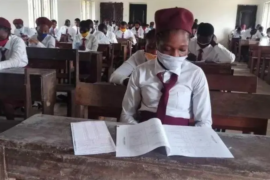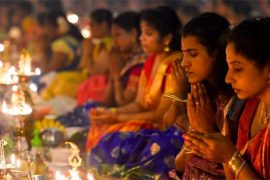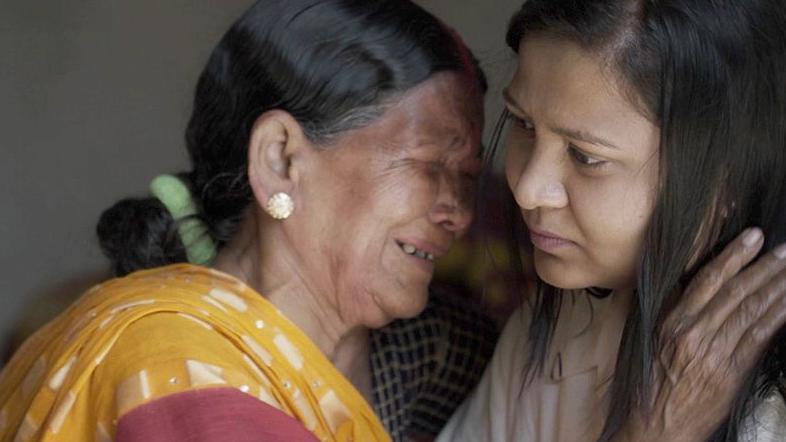
Midwife Siro Devi dey hug Monica Thatte tightly and she dey cry. Monica, wey dey her late 20s, just return to wia dem born her – di Indian town wia Siro bin deliver hundreds of babies.
But dis no be straightforward reunion. Painful history dey behind Siro tears.
Shortly bifor dem born Monica, Siro and several Indian midwives like her bin regularly dey under pressure to murder newborn girls.
Monica, evidence suggest say na one of di babies dem save.
I don dey follow Siro tori for 30 years, ever since I go interview her and four oda rural midwives for India Bihar state for 1996.
- No cry or happy sound: Di hospital ward full of pikin wey dey starve
- Pregnant women for Afghanistan dey fear to die for labour room on top maternity care wahala
One non-governmental organisation bin identify dem as di midwives wey dey behind di murder of baby girls for di district of Katihar as dem dey under pressure from di new-borns parents. Dem kill dem by feeding dem wit chemicals or dem go just press dia necks.
Hakiya Devi, di eldest of di midwives wey I interview bin tell me say at di time, she bin don kill 12 or 13 babies.
Anoda midwife, Dharmi Devi, admit say she don kill more – at least 15-20.
E no dey possible to sabi di exact number of babies dem don kill, sake of di way dem take gada di data.
But dem feature for one report wey one NGO publish for 1995, based on interviews wit dem plus 30 oda midwives.
If di report estimates dey accurate, 35 midwives dey murder more dan 1,000 baby girls evri year for one district.
According to di report, Bihar at di time bin get more dan half a million midwives. And di killing of infants no dey happun for only Bihar.
To refuse di order, Hakiya say, no be option for a midwife.
“Di family go lock di room and stand behind us wit sticks,”Hakiya Devi tok.
“Dem say: ‘We already get four-five daughters. Dis go clear out our wealth.
Once we give dowry for our girls, we go starve to death. Now, we don born anoda girl. Kill her.’
“Who we fit complain to? We dey scared. If we go police, we go enta wahala. If we tok, pipo go threaten us.”
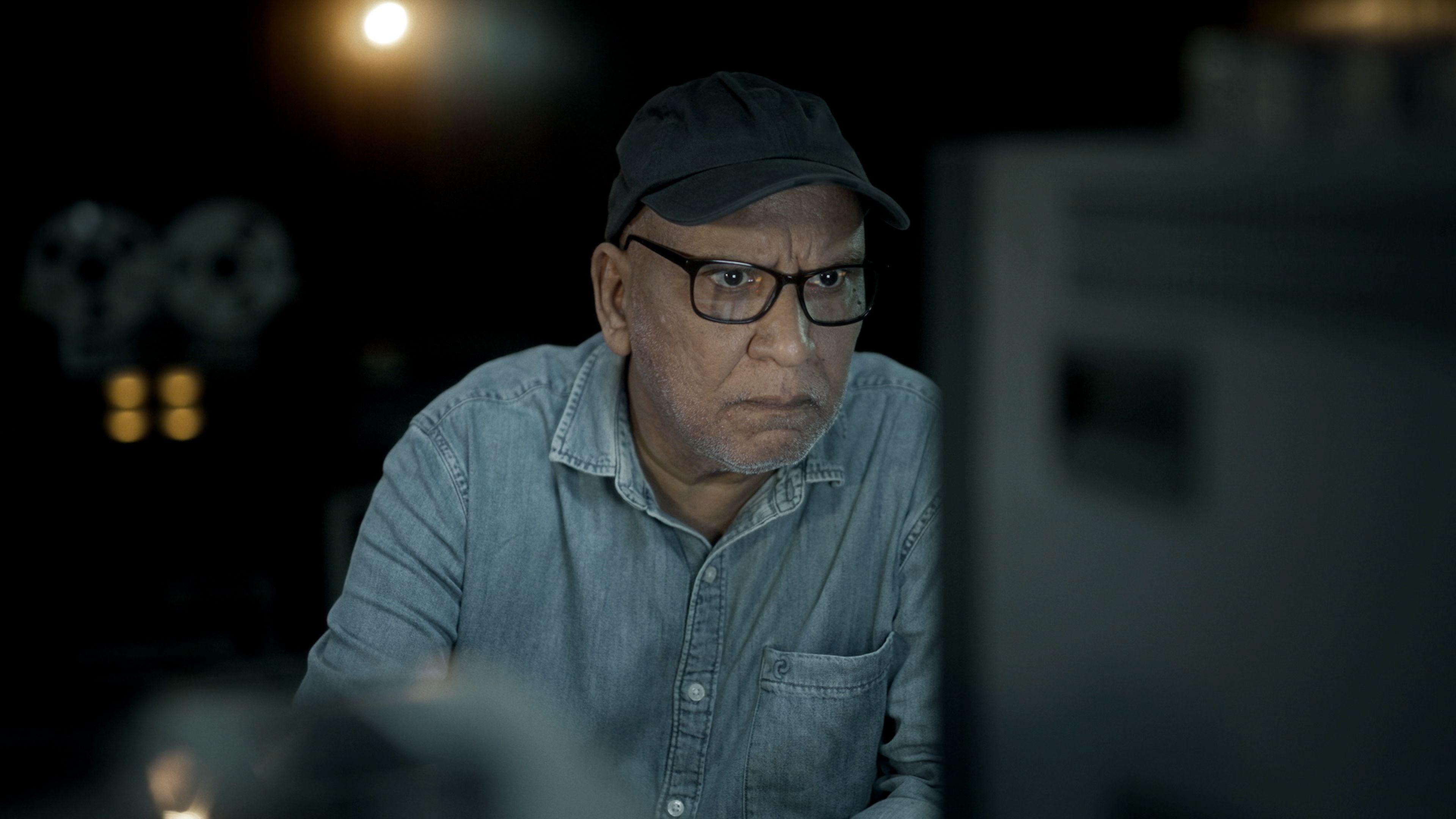
Di role of midwife for rural India dey rooted for tradition, and e dey burdened by di harsh realities of poverty and class.
Di midwives wey I interview belong to di lower class for India class hierarchy.
Midwifery na profession wey dia mothers and grandmothers pass on give dem.
Dem bin live for a world wia to refuse di orders of powerful, upper-caste families dey unthinkable.
Dem fit promise di midwife sari, one sack of grain or one small amount of moni for killing a baby. Sometimes even di moni dem no go pay.
Di birth of a boy dey give dem about 1,000 rupees. Di birth of a girl dey earn dem 500 rupees.
Di reason for dis imbalance dey inside India custom of giving dowry, dem explain.
Though dem don cancel di custom for 1961, e still hold strong for di 90s – and e still continue into di present day.
Dowry fit be anytin – cash, jewellery, utensils. But for many families, rich or poor, na di condition of wedding be dat. And dis na wetin, for many, make dem still see di birth of a son as a celebration and di birth of a daughter as financial burden.
Siro Devi, di only midwife of dose wey I interview wey still dey alive, bin use one clear physical image to explain dis difference in status.
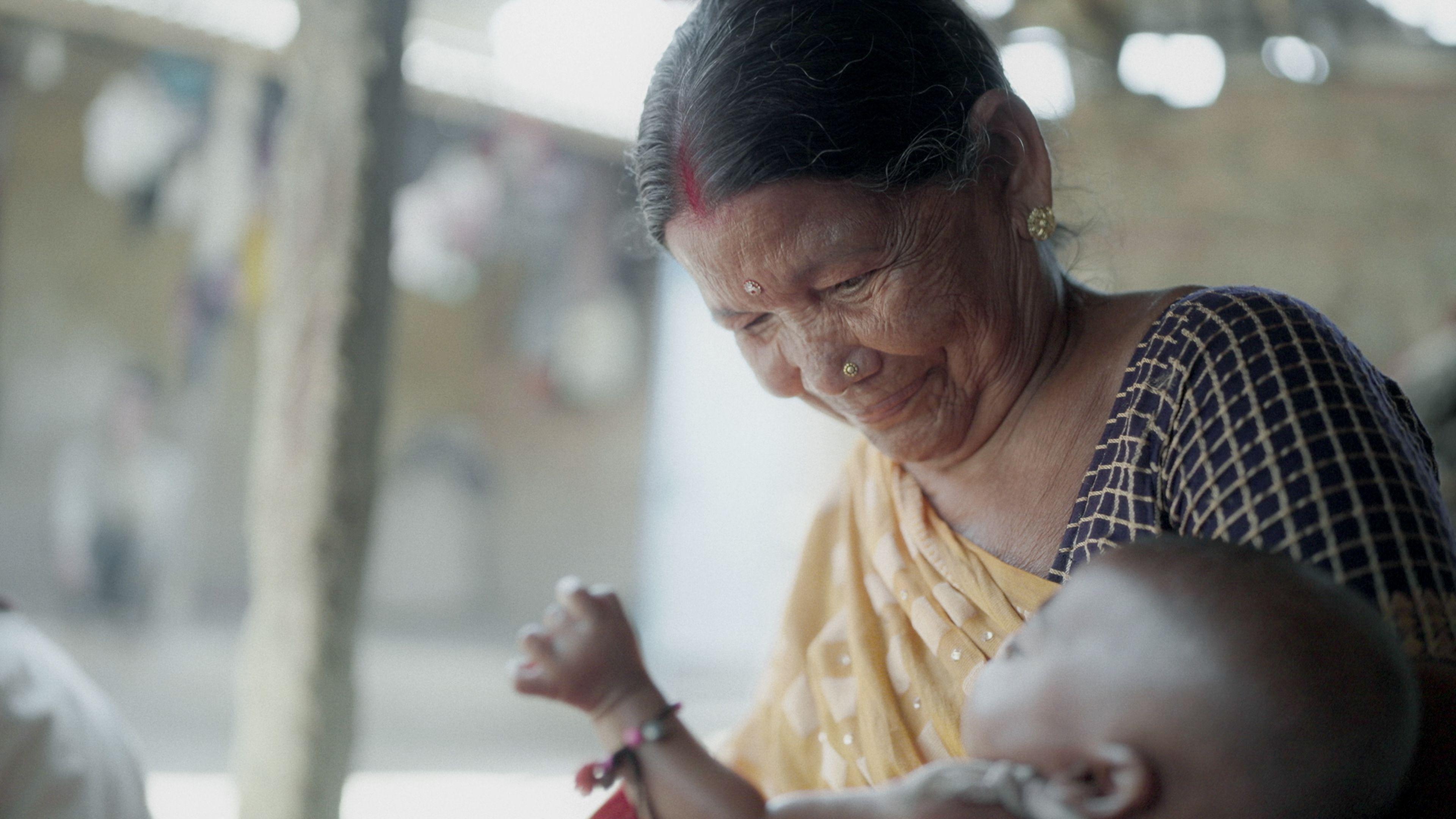
“One boy above di ground – dey higher. One daughter below – dey lower. Weda di son go feed or take care of im parents or not, dem no care, all dem want na boy.”
Di preference for sons dey evident for India national-level data.
Dia most recent census for 2011, bin record a ratio of 943 women to evri 1,000 men. Dis nevertheless na improvement on di 1990s – for 1991 census, di ratio na 927/1,000.
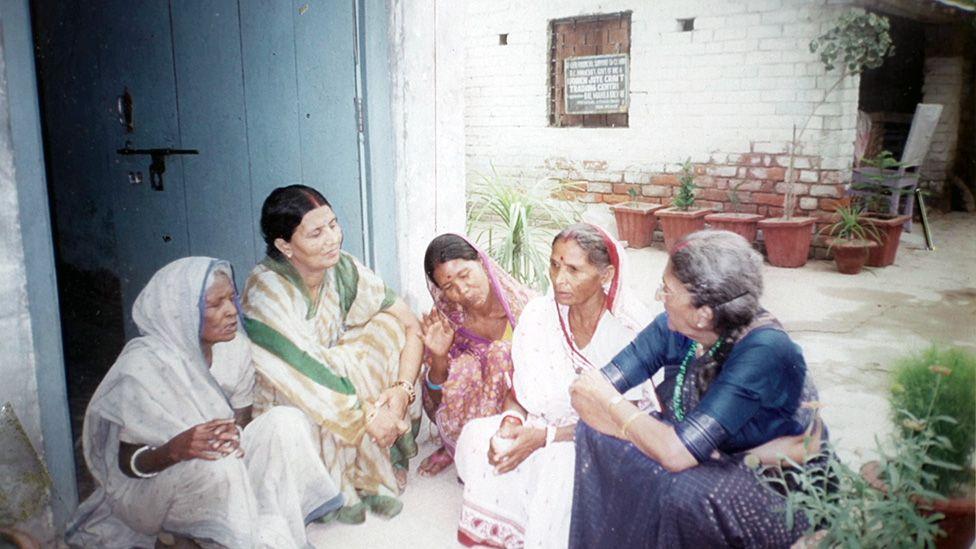
By di time I finish to feem di midwives testimonies for 1996, one small, silent change don begin.
Di midwives wey one time dey carry out these orders begin dey resist.
Na Anila Kumari, one social worker wey dey support women for di villages around Katihar start dis change, and she bin dey dedicated to addressing di root causes of these killings.
Anila approach bin dey simple. She ask di midwives, “You go do dis to your own daughter?”
Her question clearly touch years of rationalisation and denial. Di midwives get some financial help through community groups and gradually di cycle of violence bin dey interrupted.
Siro, as she dey follow me tok for 2007, explain di change.
“Now, whoever tell me to kill, I go tell dem: ‘Look, give me di child, and I go carry her go give Anila Madam.’”
Di midwives bin rescue at least five newborn girls from families wey wan kill dem or wey don already abandon dem.
One child die, but Anila bin arrange make dem send di oda four to Bihar capital, Patna, go one NGO wey organise dia adoption.
Di story for don end for there. But I wan know wetin become of those girls wey dem adopt, and where life don carry dem go.
Medha bin still dey in touch wit one young woman wey she believe be one of these rescued babies.
Anila tell me say she bin give all the girls wey di midwives save di prefix “Kosi” before their name, a homage to di Kosi river for Bihar. Medha bin remember say Monica bin get “Kosi” prefix before her adoption.
Di adoption agency no allow us look Monica records, so we no fit dey sure. But her origins for Patna, her approximate date of birth plus di prefix “Kosi” all point to di same conclusion: Monica dey, in all probability, one of di five babies wey Anila and di midwives rescue.
Wen I go meet her for her parents’ house wey dey some 2,000km (1,242 miles) away for Pune, she say she dey lucky to get loving family wey adopt her.
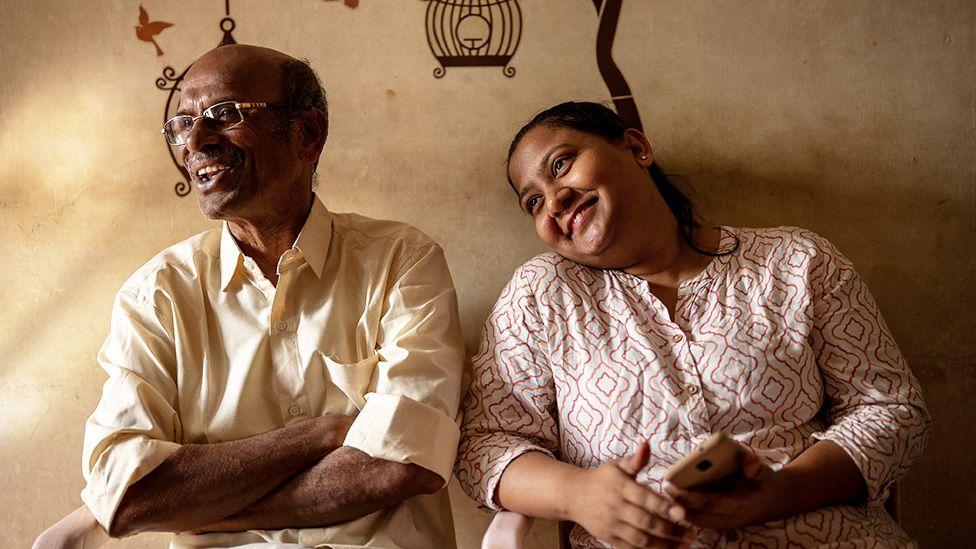
“Dis na my definition of a normal happy life and I dey live am,” she tok.
Monica know say she bin dey adopted from Bihar. But we dey able to give her more details about di circumstances of her adoption.
Earlier dis year, Monica bin travel go Bihar to meet Anila and Siro.
Monica see herself as di height of years of hard work by Anila and di midwives.
“Pesin dey prepare hard to do well for exam. I dey feel like dat. Dem do di hard work and now dem dey so curious to meet di result… So definitely, I go like to meet dem.”
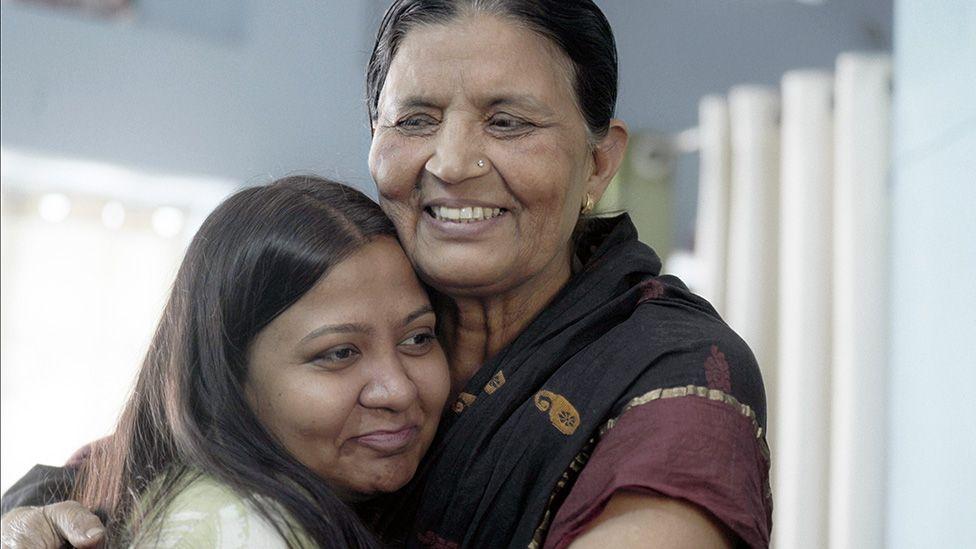
Anila bin cry tears of joy wen she see Monica. But Siro response feel different.
She cry well-well as she hold Monica close and comb through her hair.
“I carry you [go di orphanage] to save your life… My soul dey at peace now,” she tell her.
But wen, some days later, I try to ask Siro about her reaction, she no gree follow me tok again.
“etin happun for di past dey for di past,” she tok.
But wetin no dey for di past na di prejudice wey some still hold against baby girls.
Reports of di killing of infants no dey common again, but sex-selective abortion still dey common, even though e don dey illegal since 1994.
If one listen to di traditional folk songs wey dey dey sing during childbirth, known as Sohar, for parts of north India, dem dey reserve joy for di birth of a male child.
Even for 2024, e take hard work to get local singers to change di lyrics so dat di song go celebrate di birth of a girl.
As we dey feem our documentary, dem discover two baby girls wey dem abandon for Katihar – one for inside bush, and di oda one for roadside, di babies na ust a few hours old. One later die. Dem put di oda one up for adoption.
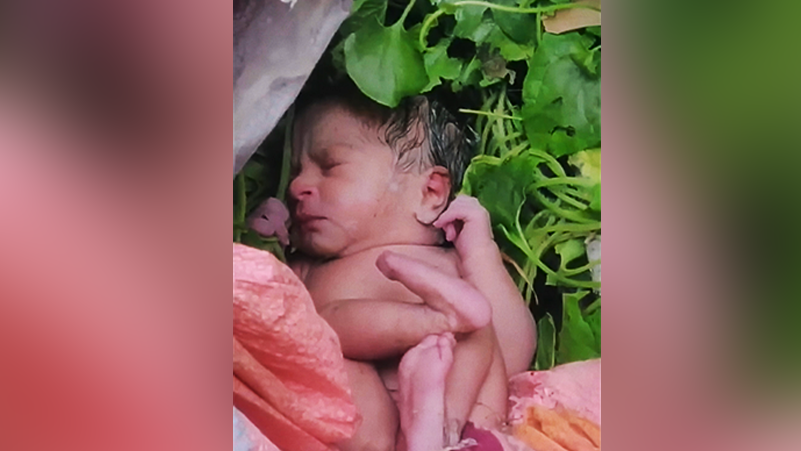
Before Monica comot Bihar, she visit dis baby for di Special Adoption Centre for Katihar.
She say she dey sad as she know say although female infanticide fit don reduce, but abandoning baby girls still dey go on.
“Dis na cycle… I fit see myself there a few years ago, and now again one girl dey there wey her case dey similar to mine.”
But happier similarities dey too.
One couple for di north-eastern state of Assam don adopt di baby. Dem name her Edha, wey mean happiness.
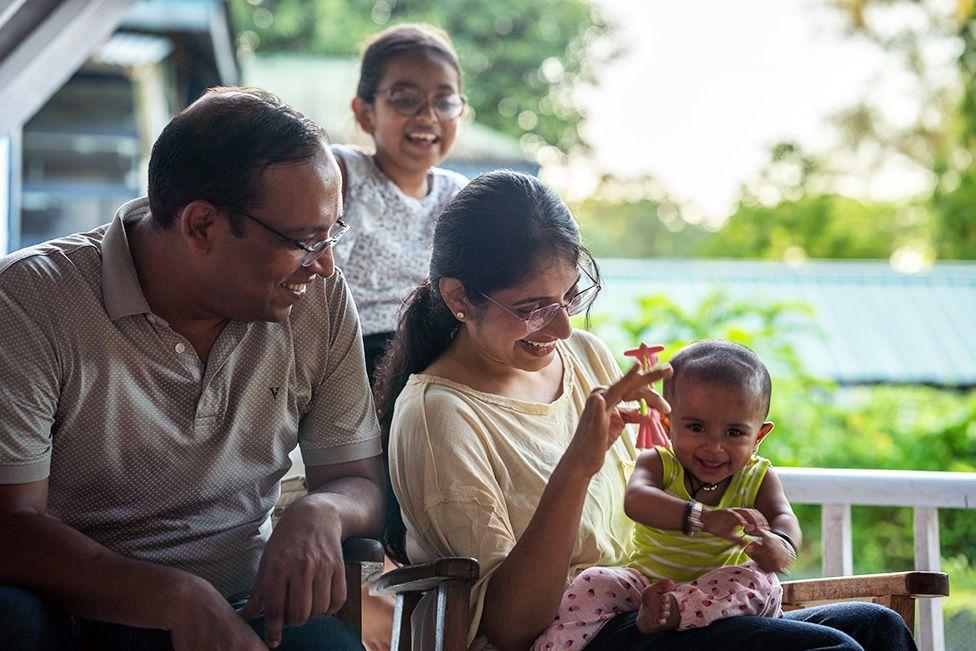
“We see her foto, and we dey clear – say a baby once abandoned no fit dey abandoned tow times,” her adoptive father Gaurav, wey be officer for di Indian air force tok.
Every few weeks Gaurav dey send me video of Edha latest antics. I dey sometimes share dem wit Monica.
Looking back, di 30 years spent on dis story no ever just dey about di past. E dey about confronting uncomfortable truths. Wetin happun for di past no fit change, but e fit dey transformed.
And for dat transformation, hope dey.


